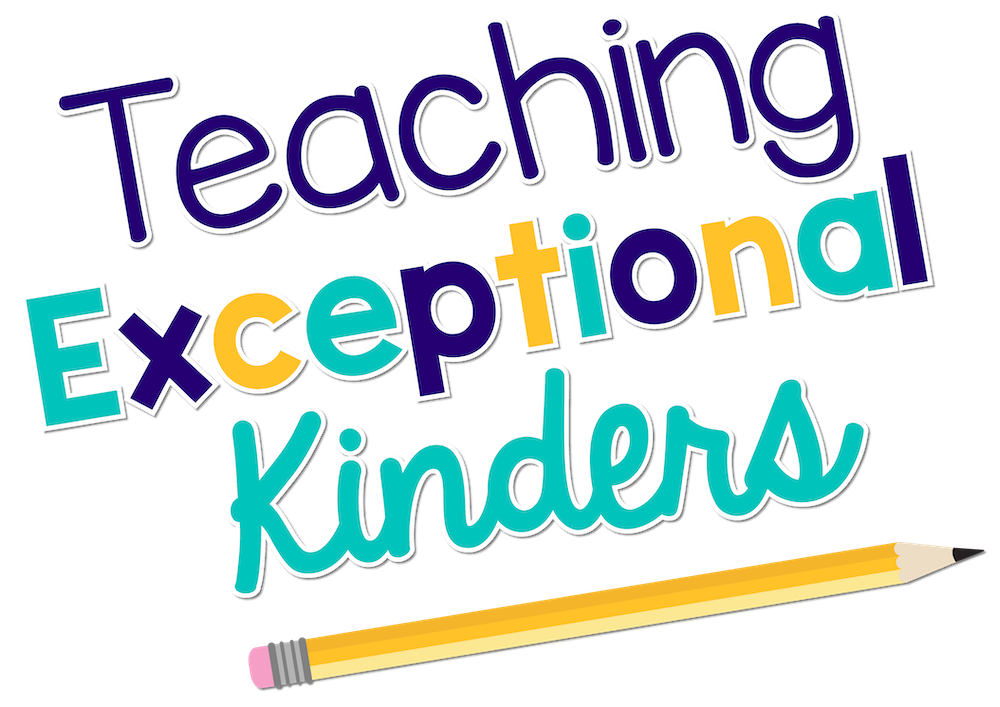Low-Prep Individual Behavior Charts That Work!
Do you have students who just don’t seem to be motivated by your whole-class reward system? It might be time to address their behavior on a more individualized level. In this post, I’m sharing my favorite low-prep individual behavior charts that work with young students in kindergarten!
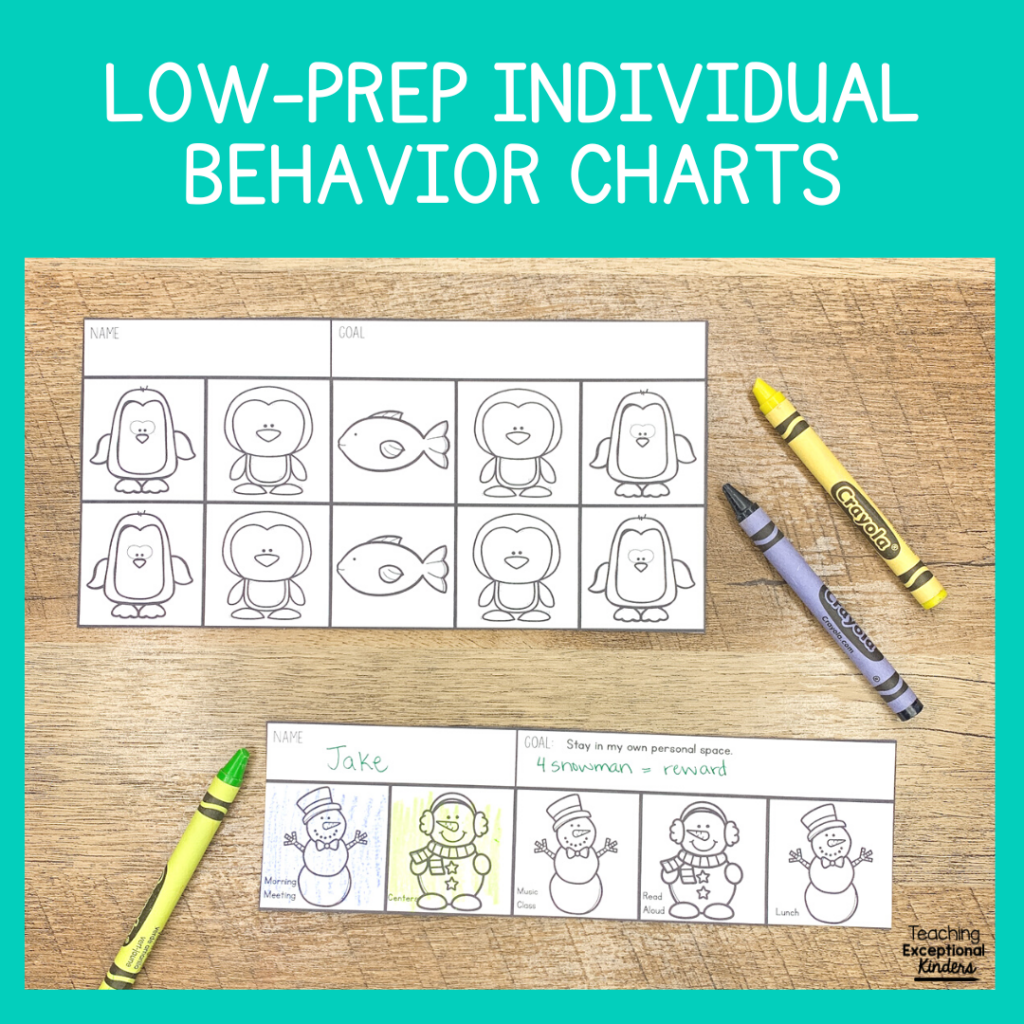
How to Set Up Individual Behavior Charts in Kindergarten
The first step in setting up an individual behavior chart is to select a goal. Choose a measurable behavior target that the student can realistically achieve, such as “Raise hand before speaking with two or fewer reminders.” This goal is written on the top of their behavior chart.
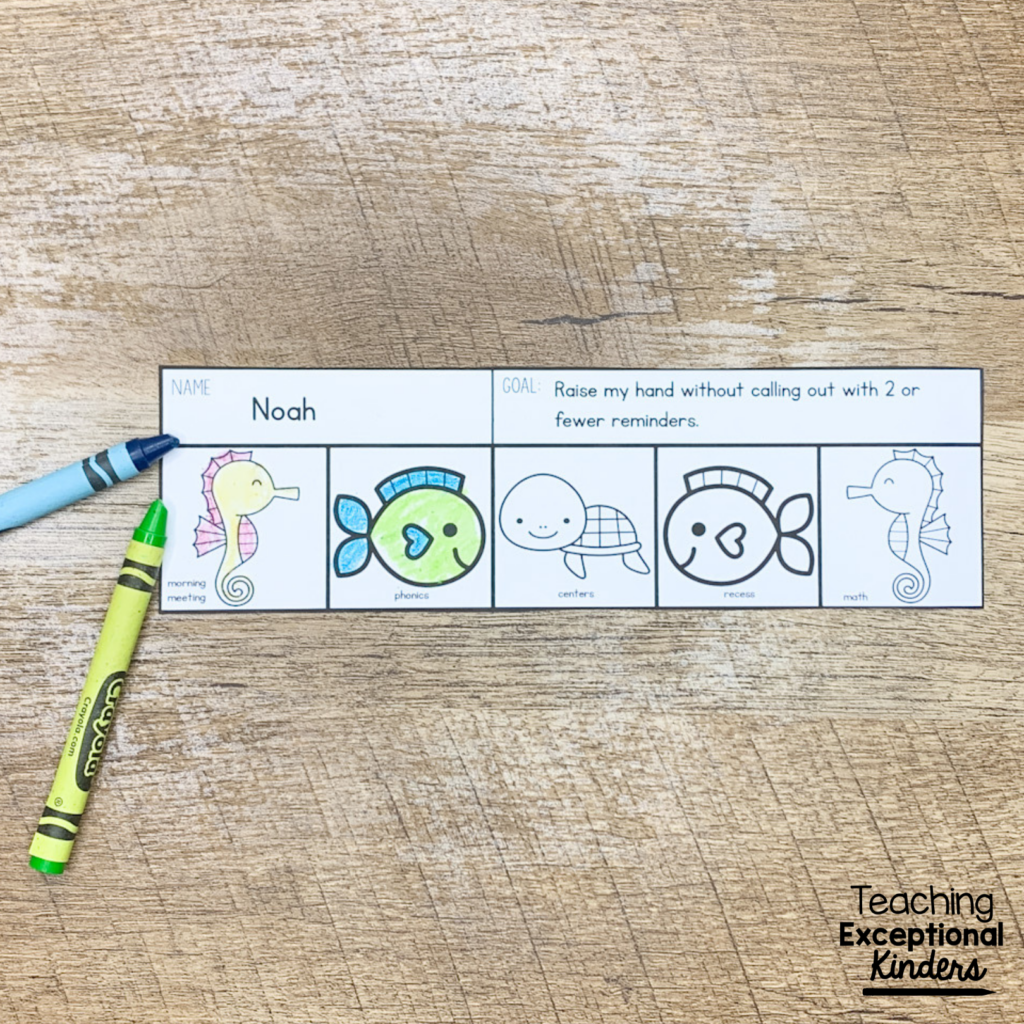
The next step is to determine what reward the student is working toward and how many spaces on their behavior chart they need to color in order to earn it. As they demonstrate the behavior, they will color in one of the boxes on the chart. I like to label the boxes of the individual reward chart with specific time periods. You can check out this video for even more details about how to set up these behavior charts in your classroom.
Why Individual Behavior Charts Work in Kindergarten
It might seem daunting to add individual behavior charts to the mix of your classroom management, especially if you have several students who would benefit from this level of support. If you’re concerned about this, I wanted to share some specific reasons why individual behavior charts are worth using in kindergarten.
1. They Are Simple
If behavior charts are too complicated to use or too time-consuming to prep, it is likely that they won’t be used consistently. Behavior management tools are only helpful if they are used! This is why I like the simplicity of these charts. In addition to being easier to prep, these streamlined behavior charts are easy for young students to understand. This will make it more likely that they will buy in to the reward system.
I love these particular behavior charts because the only thing you need is a writing utensil for students to color in each box. They are also easy to send with your student to classes like PE or library. As long as your goal is specific, all the teachers who come in contact with the student should be able to say yes or no if they earn a space.
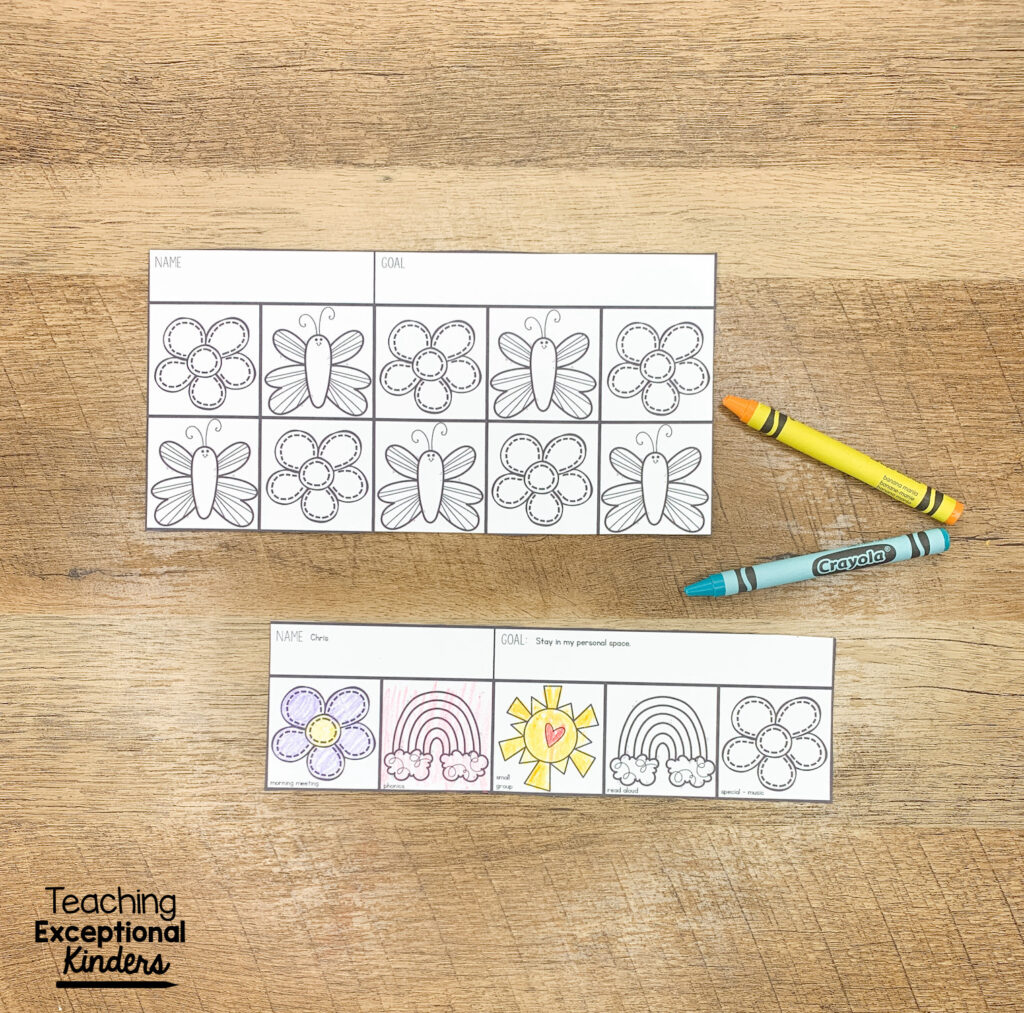
2. They Provide Visual Reminders
Young students are very visual, so it’s helpful for them to see the day broken up into smaller pieces on an individual behavior chart. To five- and six-year-olds, the school day is a very long time! This can become overwhelming for students who are still learning to demonstrate expected behaviors at school. Breaking the day into smaller pieces will make the goal seem more manageable.
3. They Target Specific Behavior
One of the best features of an individual behavior chart is that you can target the behavior that the student needs to work on. As you collect the completed behavior charts, you are also collecting helpful data about the behavior. For example, you might notice that the student consistently misses the opportunity to color in the box for center time. This data will help you make decisions about how to best support this student during that block of time.
You can also use these individualized behavior systems to support students only during specific time periods. Do you have a student who buys into the whole-class reward system but really struggles during music class? You could use an individual behavior chart for that one class, splitting that period into shorter chunks of time.
4. They Are Motivating
It’s human nature to avoid things that are too challenging for us. This is even true in kindergarten! When students rarely feel successful when it comes to their behavior, they won’t want to even try. Individual behavior charts are a way to help students feel successful, which increases motivation! As students color in each box of their reward charts, it validates their hard work to demonstrate the target behavior. Plus, it encourages them to keep trying so they can color in the whole chart!
You can adjust an individual behavior chart to increase motivation even more:
- Choose a chart theme that is interesting to the student
- Provide a choice of writing utensils for coloring the chart: Markers, crayons, colored pencils, etc.
- Use one chart for the morning and one for the afternoon
- Use a reward menu with choices that are highly motivating for the student
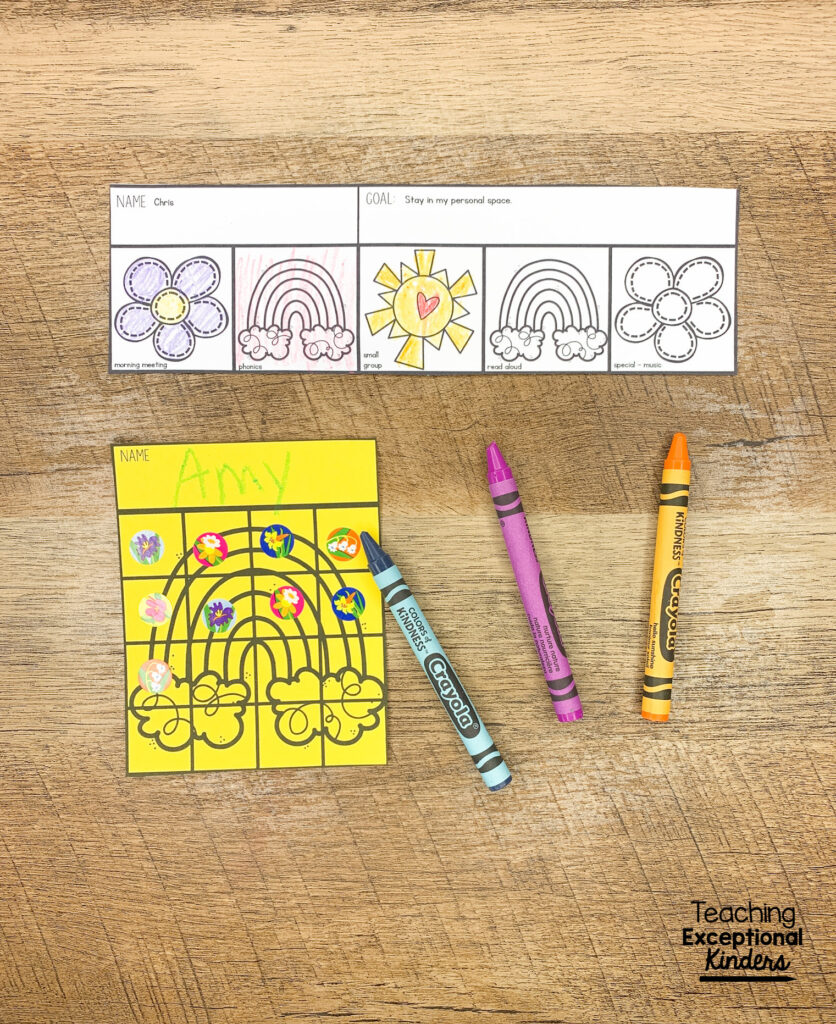
5. They Have an End
An individual behavior chart is not meant to last forever. In fact, the most successful behavior plans are those that grow and adapt with the student, gradually tapering off the structure of behavior charts. All students are different in how long they need to use an individual behavior chart. Some respond quickly to the success they experience and begin to buy in to the whole group reward system. Other students are able to transition to a sticker chart with less structure.
There will also be students who need the structure of an individual behavior chart for the whole year. Even in this case, the goals will gradually change and adjust as the student experiences success. You won’t be using the same chart with the same goal all year long.
Printable Behavior Charts for Kindergarten
Would you like to try individual behavior charts in your classroom? I have created a bundle of low-prep printable behavior charts that will last you all school year! These individual reward charts come with many different fun themes for each season that will help to keep your students engaged and motivated. In this bundle, you’ll find individual behavior charts with either five or ten spaces for students to color.
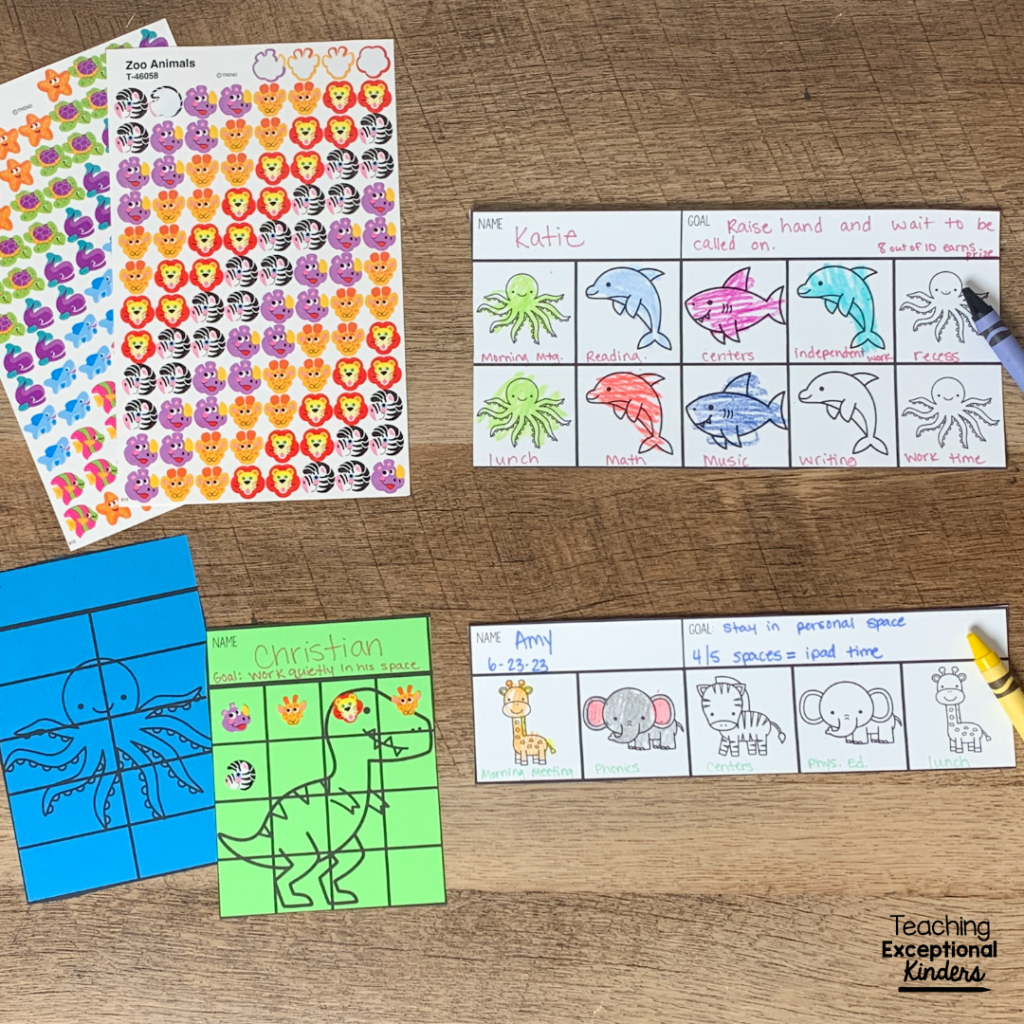
I have also included seasonal sticker charts for your students who would benefit from that type of reinforcement. The charts in this resource are editable so you can easily type in the student’s name and behavior goal.
To take a closer look at everything included in this time-saving bundle, head over to the Teaching Exceptional Kinders shop or to my TPT store.
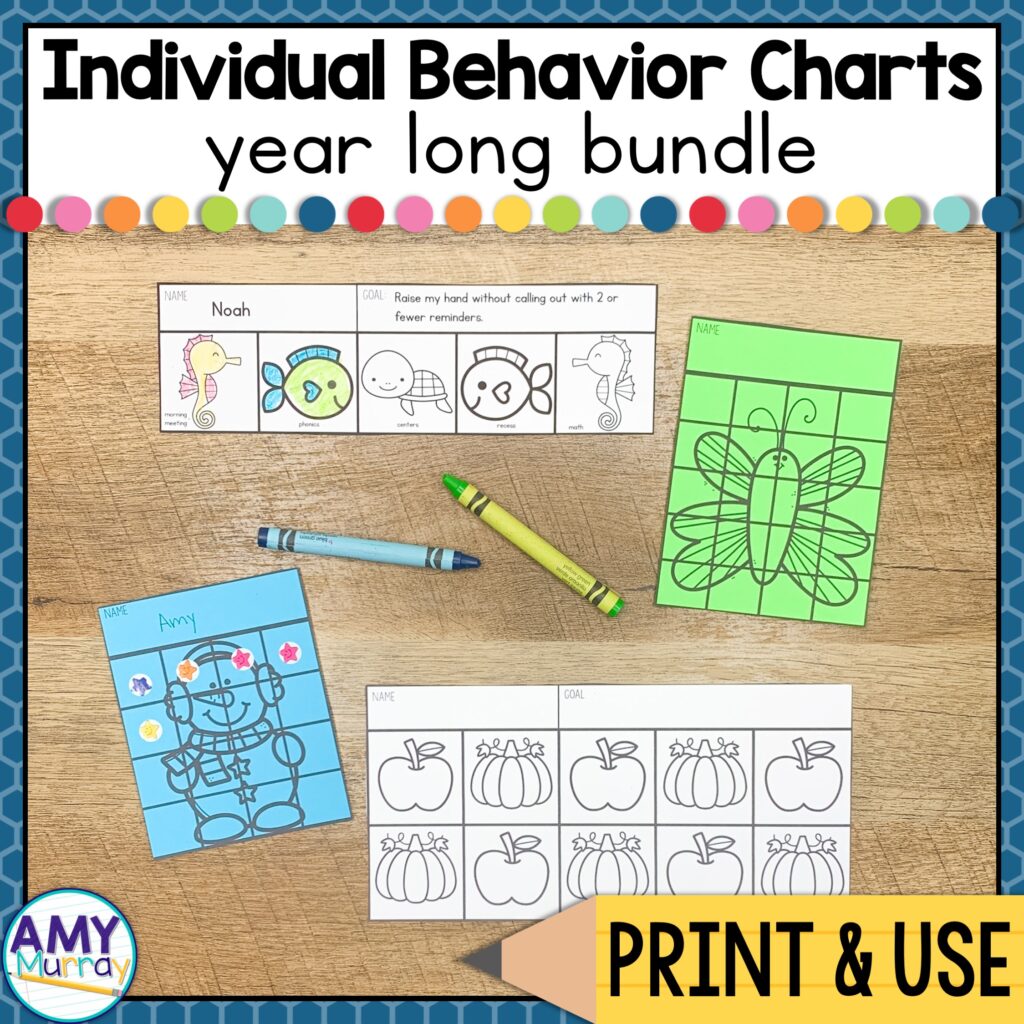
Save These Low-Prep Individual Behavior Charts
If you’d like to use individual behavior charts in your classroom, be sure to come back to this post! Just add the pin below to your favorite teaching board on Pinterest. You’ll be able to quickly find these behavior charts whenever you need them!
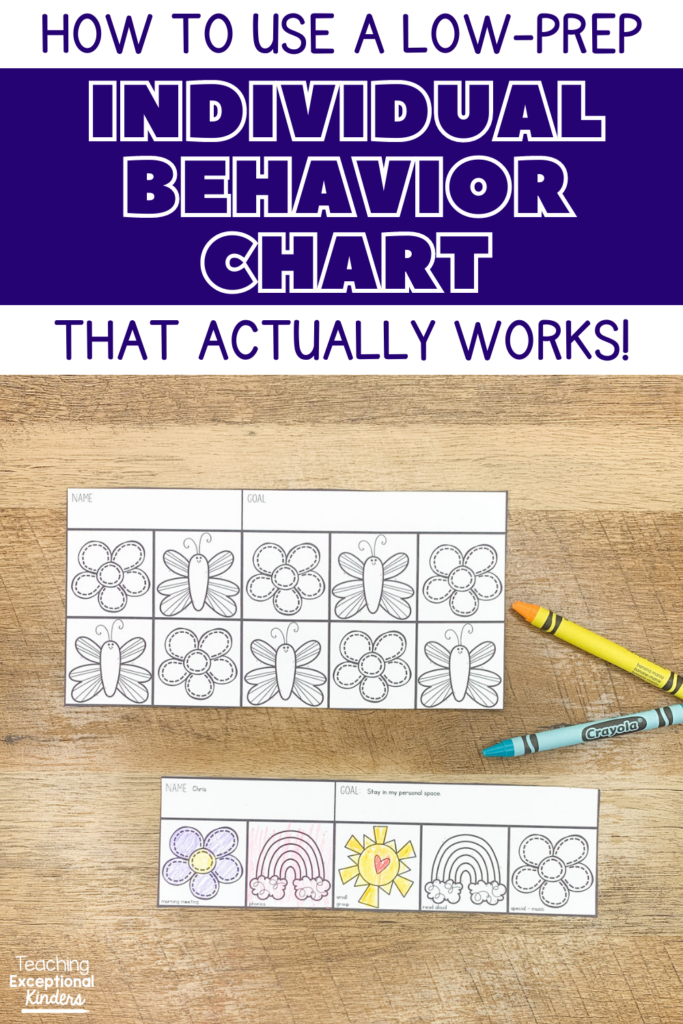
Amy
SITE DESIGN BY LAINE SUTHERLAND DESIGNS

